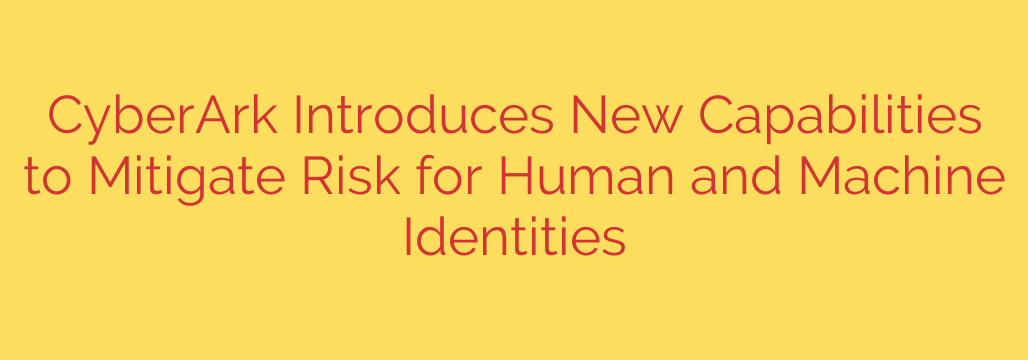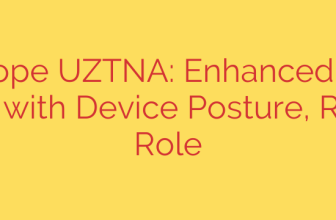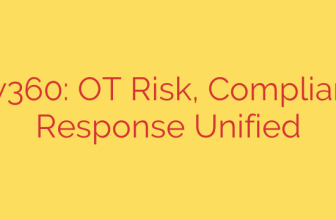
Beyond Passwords: A Unified Strategy for Securing Human and Machine Identities
In today’s complex digital landscape, the concept of a secure network perimeter has all but vanished. The new front line in cybersecurity is identity. Every user, application, cloud workload, and automated process represents an identity that, if compromised, can provide an attacker with the keys to your entire kingdom. Managing this explosion of both human and machine identities has become one of the greatest challenges for security teams.
Organizations are grappling with a sprawling and fragmented collection of identities across on-premises, cloud, and hybrid environments. This “identity sprawl” creates blind spots and inconsistencies, making it difficult to enforce security policies uniformly. The solution lies not in adding more siloed tools, but in adopting a unified platform that manages the security of every identity, everywhere.
The Power of a Unified Identity Security Platform
A unified approach breaks down the traditional barriers between different identity management tools. By bringing all identity and access controls under a single umbrella, organizations gain unprecedented visibility and control. This centralized strategy is critical for reducing complexity, streamlining operations, and most importantly, shrinking the attack surface that adversaries seek to exploit.
The core benefit is a single, consistent security policy engine that applies to everyone and everything. Whether it’s an employee logging in, a developer accessing a cloud console, or an automated script running a critical process, the same robust security measures are enforced.
Automating the Identity Lifecycle with No-Code Workflows
One of the most significant advancements in modern identity security is the ability to automate complex processes without extensive coding. Managing the lifecycle of an identity—from onboarding to role changes to offboarding—is traditionally a manual, error-prone task.
Modern platforms are changing this with no-code orchestration capabilities. This means security teams can:
- Design and implement automated identity workflows using a simple drag-and-drop interface.
- Integrate seamlessly with existing IT and HR systems to trigger actions based on events, such as a new hire or a department change.
- Ensure access is granted and revoked in a timely manner, drastically reducing the risk of orphaned accounts or lingering privileges.
This level of automation frees up valuable IT resources and minimizes the risk of human error, ensuring that access rights are always aligned with current business needs.
Achieving Continuous Compliance and Audit Readiness
Meeting stringent compliance regulations like SOX, GDPR, and HIPAA is a constant pressure for businesses. Proving that only authorized users have access to sensitive data often involves a frantic, last-minute scramble to gather evidence for auditors.
An intelligent, unified identity platform transforms this process from a periodic fire drill into a state of continuous readiness. Key capabilities include:
- Centralized collection and analysis of access data from across the entire enterprise.
- Automated evidence gathering that proves privileged access policies are being enforced correctly.
- A unified dashboard that provides auditors with a clear, consolidated view of access controls and user activity.
By embedding compliance into daily operations, organizations can face audits with confidence, knowing that a complete, accurate record of access is always available.
Strengthening Security for Privileged Cloud Sessions
As more critical infrastructure moves to the cloud, securing administrative access to web-based consoles like AWS, Azure, and GCP is paramount. These privileged sessions are high-value targets for attackers. Historically, monitoring this activity required cumbersome proxy servers or agents.
Today, advanced solutions offer a more streamlined approach. Security teams can now secure, monitor, and record privileged sessions conducted entirely within a web browser. This agentless method provides a frictionless experience for users while giving security teams deep visibility. By recording all actions taken within a privileged web session, organizations can accelerate incident response and forensic investigations without disrupting developer and administrator workflows.
Actionable Steps to Enhance Your Identity Security Posture
Protecting your organization from identity-based threats requires a proactive strategy. Here are four essential steps you can take:
- Enforce the Principle of Least Privilege: Ensure every identity—human and machine—has only the minimum level of access required to perform its function. Regularly review and recertify these permissions.
- Unify Your Identity Management: Break down silos between your existing tools. Invest in a platform that provides a single source of truth for all identities and their access rights across your entire IT ecosystem.
- Automate Identity Lifecycle Management: Use no-code or low-code solutions to automate onboarding, offboarding, and access requests. This reduces manual effort, speeds up processes, and eliminates security gaps.
- Monitor All Privileged Activity: Implement robust session monitoring and recording for all privileged access, especially for sensitive cloud consoles and infrastructure. This visibility is crucial for detecting and responding to threats.
Ultimately, the future of cybersecurity is identity-centric. By moving towards a unified and intelligent platform, businesses can finally gain the control and visibility needed to protect their most valuable assets in an increasingly interconnected world.
Source: https://www.helpnetsecurity.com/2025/10/08/cyberark-expands-machine-identity-security-portfoli/








